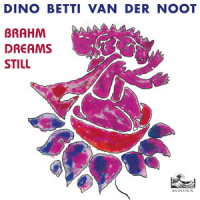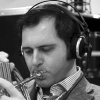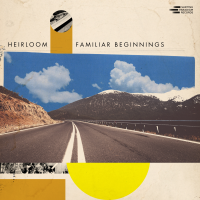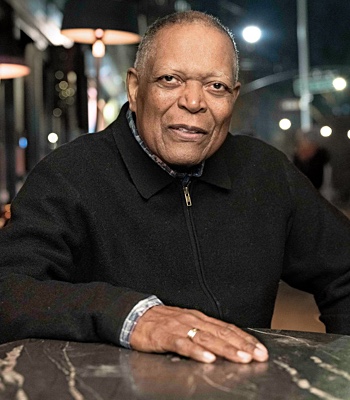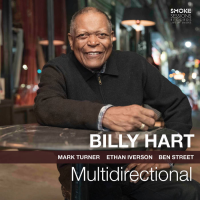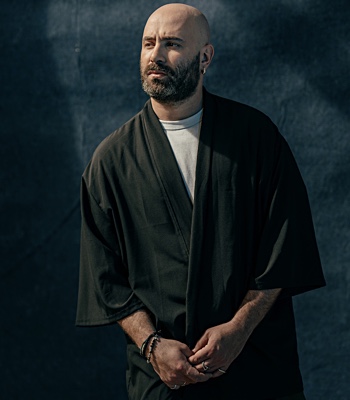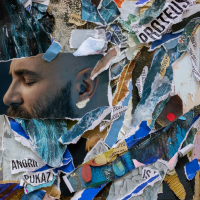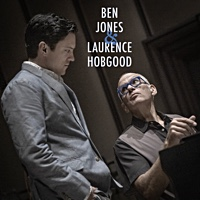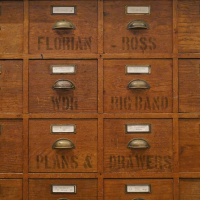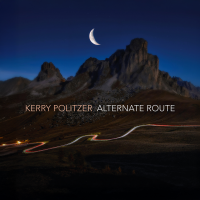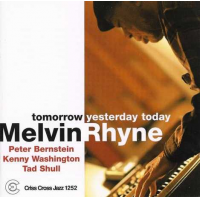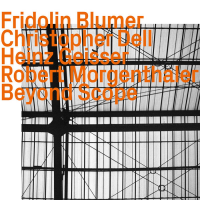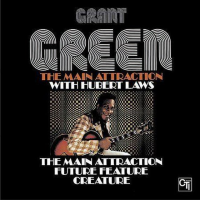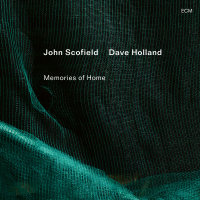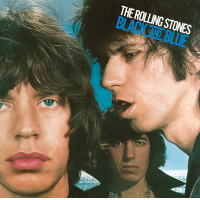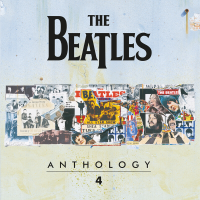Home » Jazz Articles » Liner Notes » Dino Betti van der Noot: Brahm Dreams Still
Dino Betti van der Noot: Brahm Dreams Still
As I got into my research for the project, I was amazed by Dino's story. He was 86. He had never been a full-time musician. He had owned a major advertising agency in Italy, with clients on the level of IBM, Citroën, Duracell and Aramis. In his spare time he pursued a very unusual hobby: he operated a big band. In Dino's home base of Milan, the band got together intermittently for rehearsals and recordings and, very infrequently, public concerts. I was astonished to learn that Let Us Recount Our Dreams was the 16th album by Dino's orchestra.
He has been under the radar for his entire career in music, especially outside Italy. But in my research I found that I was not the first to discover him. As far back as the 1980s, important American critics like Ira Gitler, Nat Hentoff, Neil Tesser and Kevin Whitehead had praised his work and even written liner notes for his albums. Several of his recordings had been "Album of the Year" in Musica Jazz, the foremost Italian jazz magazine. More recently, a leading expert on Italian jazz, Enzo Capua, had called Dino "the best jazz composer in Italy."
Now there is a 17th album. The five pieces on Brahm Dreams Still were composed in 2024, when Dino was 88. Once again I approached a liner note assignment with some trepidation. This time I knew much more about Dino, but I wondered whether I might have gotten a little carried away in my enthusiasm for his 16th record. I also wondered whether, two years on, during which time the world had become a darker place, Dino's affirmational music would sound less relevant.
I need not have worried. Dino is as good as I remembered. The first piece on Brahm Dreams Still is the title track. It is classic Dino, with many of his signature touches. It is opened by three drummers (Stefano Bertoli, Tiziano Tononi and Federico Sanesi), whose large arsenal of percussion implements introduces a suspenseful atmosphere. The theme emerges very gradually, and as it flows through the ensemble, it keeps transforming. Eventually it becomes a dramatic fanfare. Perhaps the single most distinctive aspect of Dino's total sound has to do with the global sonic landscape. His music occurs within a sonic environment that contains a vast array of subtle details. Often they are almost subliminal, like soft glittering lights. His large ensemble contains so many different instruments. In addition to standard big band brass (trumpets, flugelhorns, trombones, a bass trombone), there are eight different woodwinds. There are also acoustic and electric keyboards, a synthesizer, an organ and a vibraphone. There are atypical instruments like violin and Celtic harp. (The harp of Vincenzo Zitello is a source of suggestive, magical whispering throughout this album.) The three drummers have access to many exotic instruments including tabla, tanpura, darabouka, stone chimes and udu drum.
Another Dino characteristic is his management of soloists. In his band, solos are shorter. And the soloists sound more free within Dino's overarching forms. (He has said, "I'm not interested in making improvisers solo on the theme.") Most notably, the improvisers rarely solo alone. He sets up duos and trios within his 22-piece ensemble. (He has said, "I am fascinated by the idea of collaboration, by the reciprocal stimuli that happen in collective improvisation.") The very first collaboration on the album contains violinist Emanuele Parrini, keyboardist Danilo Mazzone and harpist Zitello. Their intermingling treble voices sing their own song within the song. They add vivid complementary motifs to Dino's evolving melodic whole. One of the most stunning moments on the album comes next: a searing, passionate testimony from alto saxophonist Sandro Cerino, with vibraphonist Luca Gusella shadowing him. The final collaboration on the first track is also memorable. It is a seemingly spontaneous dialog between pianist Niccolò Cattaneo and trombonist Stefano Calcagno. It is the kind of interlude that often appears in Dino's music. The two improvisers create a fascinating island in the powerful collective stream of the ensemble "Brahm Dreams Still" ends with a quick gesture from electric bassist Gianluca Alberti. Throughout the album, whenever Alberti emerges from the rhythm section and briefly steps out front, he introduces a deeper mystery into the music's already mysterious aura.
Unlike most big jazz bands, this one does not have "featured soloists." Dino allocates the solo space democratically, all across the orchestra. He writes his pieces with specific soloists in mind. (He has said, "I use the special talents of certain musicians in order to complete my compositions.") His band has been remarkably stable over the years. Almost every member has been with Dino for at least a decade—some much longer.
Another recurrent tendency is his fondness for literary allusion. The name of the title track comes from a short story by Rudyard Kipling, "The Bridge-Builders." Brahm is a Hindu deity. The universe is believed to exist within his dreams. Kipling's story contains the lines, "When Brahm ceases to dream the Heavens and Hells and Earth disappear. Be content. Brahm dreams still." The uplifting surges of this piece have meaning. (Dino says, "I am trying to send a message of hope into this desperate moment in the world.")
The second track, "A Crystalline Windless Sea," is simply gorgeous. Actually its beauty is not simple at all. Dino's haunting theme keeps reappearing in diverse iterations, as it moves through the orchestra, in the voices of many players. Melodies keep forming and reforming, looming and swelling like the sea, even a windless sea. A trio of trumpeter Alberto Mandarini, keyboardist Mazzone and electric bassist Alberti, then a duo of tenor saxophonist Giulio Visibelli and vibraphonist Gusella, emerge from this piece. Cattaneo's solo, which comes between the trio and the duo, is a flowering of pure lyricism. Dino reports that he gave Cattaneo a melodic line and its harmony and asked him to offer his own free interpretations. Cattaneo's piano is in fact thread all through "A Crystalline Windless Sea" like an inner voice, sometimes creating thematic variations, sometimes riding above the orchestra. All of the improvisers elaborate Dino's song on their own terms, yet they all express the fulfillment that the human soul experiences in the vast presence of a windless ocean. Dino is fluent in English and highly articulate about his music. But when asked where this piece came from, he is unable to say. (But he does say this: "My compositions begin with me quietly improvising on the piano and the notes come to life by their own will.")
These first two majestic tracks take up over half the album. The third piece, "Interlude in C," is a complete departure. It is pure excitement, with a ferocious solo by trombonist Luca Begonia and a wild two-piano duel by Cattaneo and Mazzone. (Dino says, "I suggest to listen to this album as a whole, where every track is connected. I composed the pieces in the order that they appear on the album. 'Interlude in C' was necessary as a break between the sea of the second track and the mountains of the fourth. I do not think of the album as a complete story, but there is a path through it.")
The title of the fourth track comes from Shakespeare's A Midsummer Night's Dream: "These things seem small and undistinguishable,/Like far-off mountains turned into clouds." This piece is a reverie almost as impressionistic and mesmerizing as the second track, but it is based on the land, not the sea. The colors are different, in the strong work of Gilberto Tarocco on clarinet and Cerino, this time not on alto saxophone but bass clarinet. (Cerino is brilliant again. His solo is somehow both rapt and emotionally naked.) The trio (violin, keyboard and harp) that had been so effective on the first track reappears here, and they become one with the clouds of the title.
The last track, "Aux premières heures bleues," takes its name from Rimbaud. It is the strangest piece on the album. It keeps shifting between startling, noisy sections that hammer out a furious eight-note ostinato, and much quieter, floating, reassuring sections. The loud sections sound like nightmares. The floating sections sound like lovely dreams. Perhaps Dino was thinking of the dreams of Brahm. If the universe is said to exist within Brahm's dreams, then certainly, in our current dark moment in the world, his dreams are sometimes nightmares. Yet if Brahm has to choose one side or the other, darkness or light, then the end of this piece, which is the end of the album, suggests that he chooses light. Most of Dino's compositions conclude in a gradual fade. But "Aux premières heures bleues" ends in a soaring crescendo that carries the possibility of hope. Be content. Brahm dreams still.
Liner Notes copyright © 2025 Thomas Conrad.
Brahm Dreams Still can be purchased here.
Contact Thomas Conrad at All About Jazz.
Thomas travels frequently writing about jazz outside the borders of the United States.
Track Listing
Brahm Dreams Still; A Crystalline Windless Sea; Interlude in C; Faraway Mountains Turning into Clouds; Aux Premières Heures Bleues.
Personnel
Dino Betti van der Noot
composer / conductorGuglielmo LoBello
trumpetAlberto Mandarini
trumpetMario Mariotti
trumpetFabio Brignoli
trumpetLuca Begonia
tromboneStefano Calcagno
tromboneEnrico Allavena
tromboneGianfranco Marchesi
tromboneSandro Cerino
saxophone, altoAndrea Ciceri
saxophone, altoGiulio Visibelli
saxophone, tenorRudi Manzoli
saxophone, tenorGilberto Tarocco
saxophone, baritoneLuca Gusella
vibraphoneNiccolò Cattaneo
pianoDanilo Mazzone
keyboardsVincenzo Zitello
harpGianluca Alberti
bass, electricStefano Bertoli
drumsAdditional Instrumentation
Guglielmo LoBello, Alberto Mandarini, Mario Mariotti, Fabio Brignoli; trumpets, flugelhorns; Gianfranco Marchesi: bass trombone; Sandro Cerino: flute, bass clarinet, alto saxophone; Giulio Visibelli: alto flute, tenor saxophone; Rudi Manzoli: tenor saxophone; Gilberto Tarocco: clarinet, bass clarinet, baritone saxophone; Vincenzo Zitello: clarsach harp; Tiziano Tononi: snare drum, udu drum & percussions; Federico Sanesi: tabla, pakhawaj, darabouka, tanpura, bells, cow bells, stone chimes & ocean drums
Album information
Title: Brahm Dreams Still | Year Released: 2025 | Record Label: Audissea
Tags
About Dino Betti van der Noot
Instrument: Composer / conductor
PREVIOUS / NEXT
Support All About Jazz
 All About Jazz has been a pillar of jazz since 1995, championing it as an art form and, more importantly, supporting the musicians who make it. Our enduring commitment has made "AAJ" one of the most culturally important websites of its kind, read by hundreds of thousands of fans, musicians and industry figures every month.
All About Jazz has been a pillar of jazz since 1995, championing it as an art form and, more importantly, supporting the musicians who make it. Our enduring commitment has made "AAJ" one of the most culturally important websites of its kind, read by hundreds of thousands of fans, musicians and industry figures every month.

